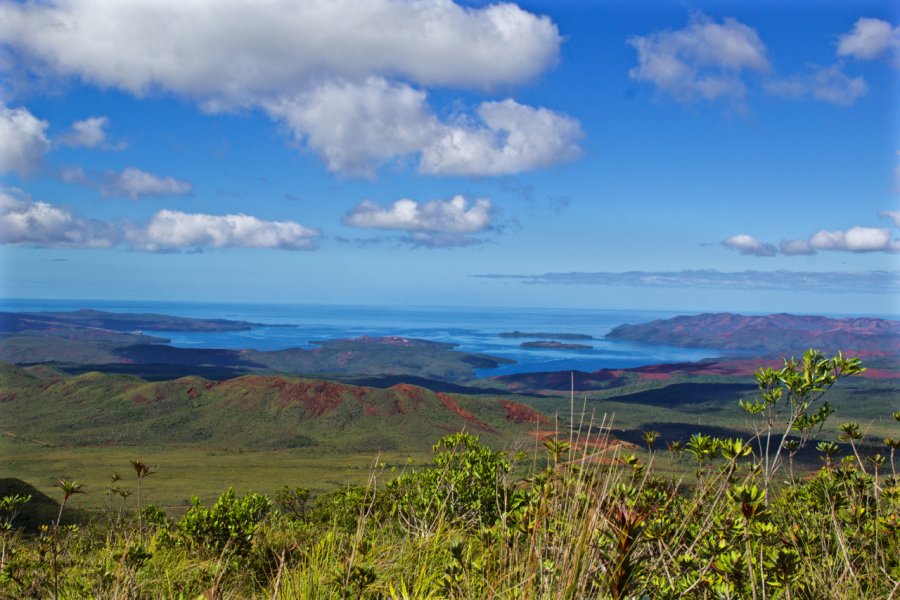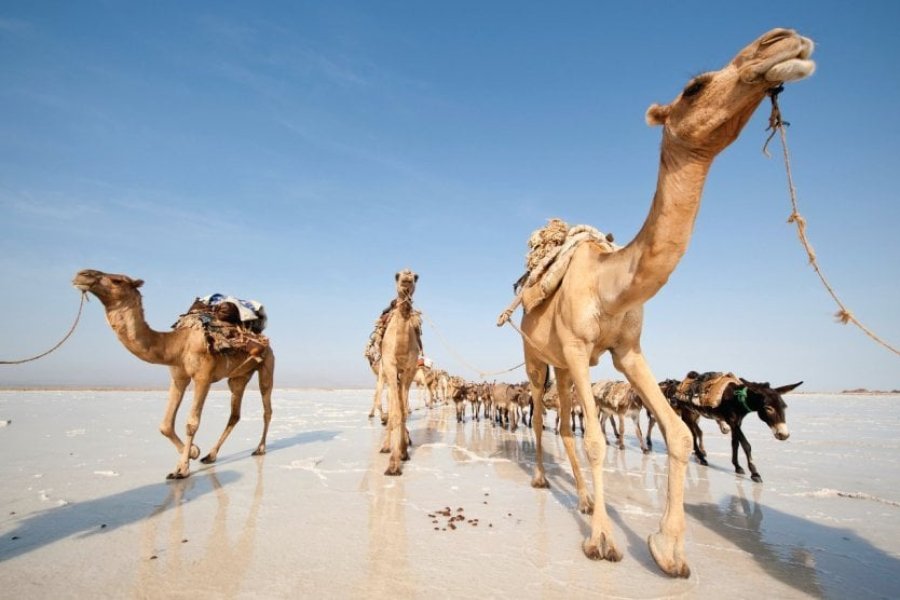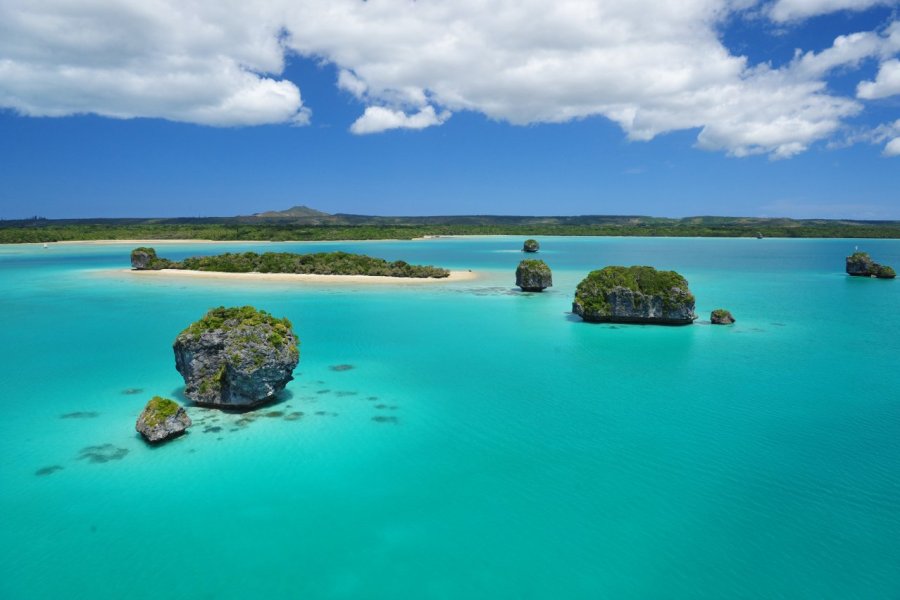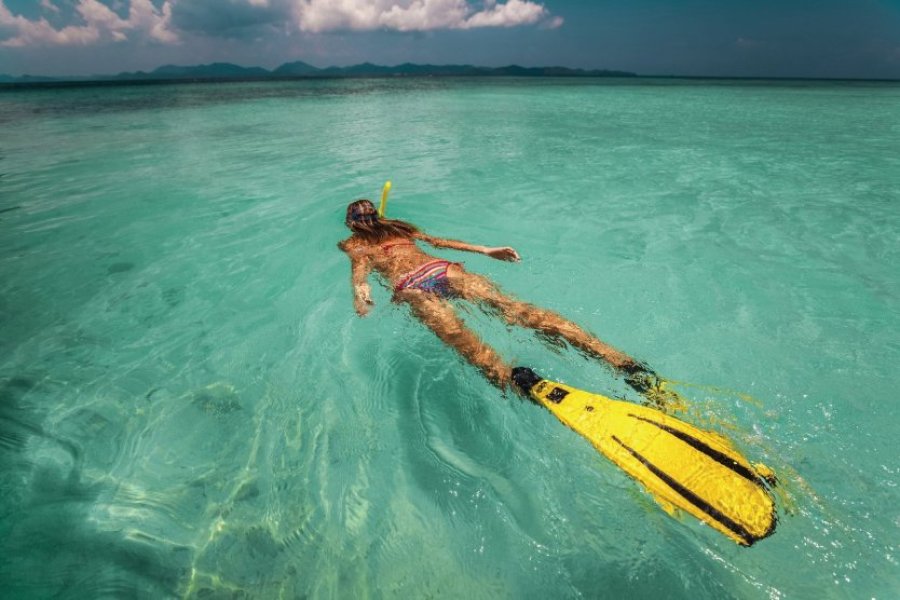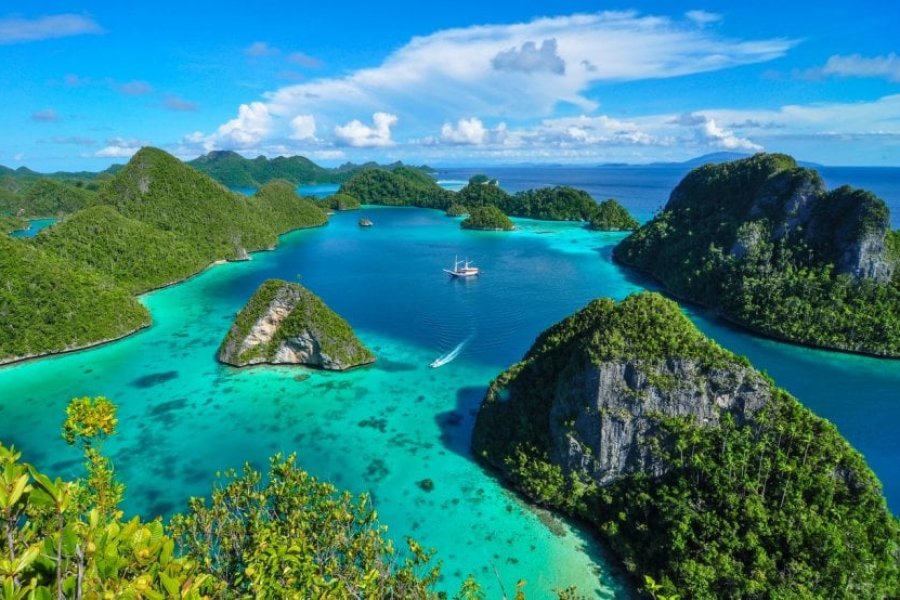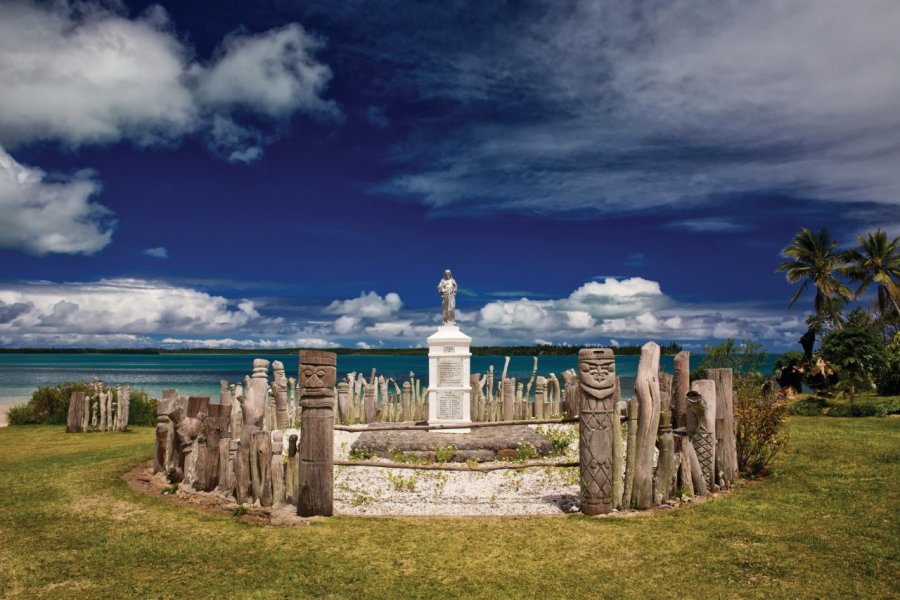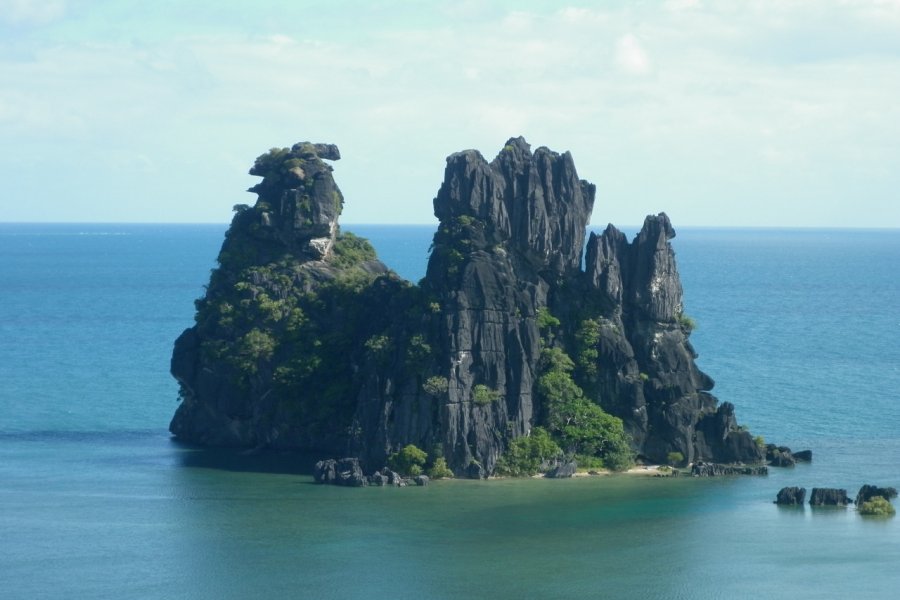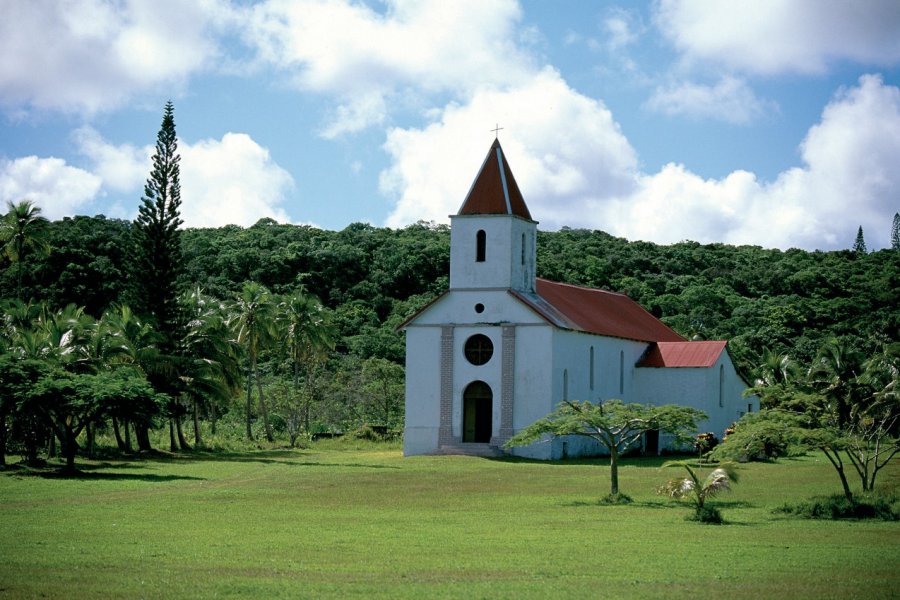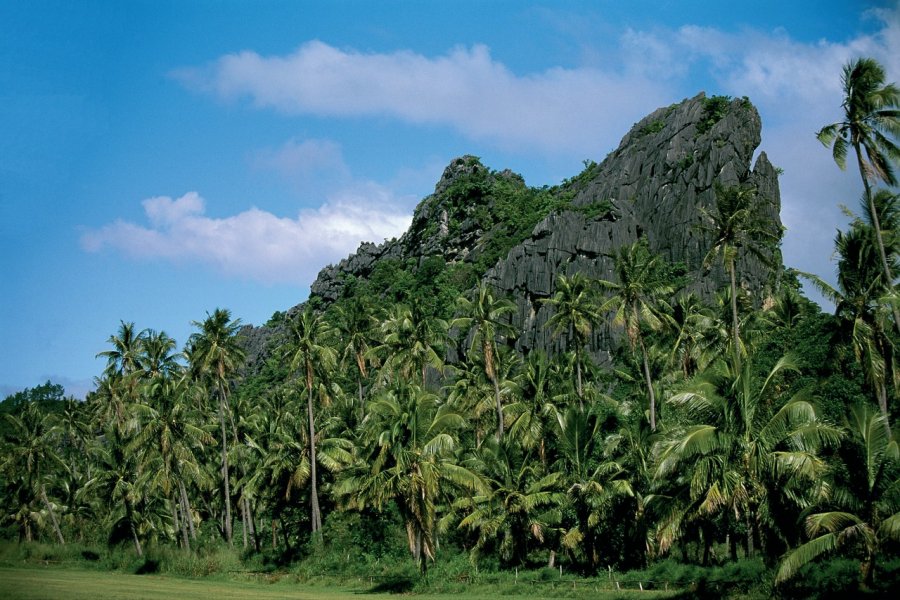Travel guide New Caledonia
A destination that we would be wrong to reserve for honeymoons, New Caledonia has so much to teach us, about our history, about cultural differences and about generosity and sharing. The "Caillou" is a jewel as rough as the nickel that its depths conceal, which softens and shapes itself as we meet. Nouméa, the modern and Europeanized capital, is home to most of the territory's population. It is bordered by beautiful turquoise beaches offering a wide range of water activities: sailing, kitesurfing, scuba diving, water cab rides, kayaking or simply exploring with flippers and snorkels. Noumea is also home to the Tjibaou Cultural Center, an architectural marvel and a window to the local culture. The rest of the island stretches over 400 km of wild and arid landscapes in the West, tropical in the East. Between the two, the Poingam peninsula, in the very north, is populated by wild horses and marks the fragile limit between a purple-tinted land and an almost translucent sea. To the west, the three Loyalty Islands of Maré, Lifou and Ouvéa each have their own personality and traditions. You can take a long walk on idyllic beaches, observing the colorful seabed or the unique rock formations while enjoying a cuisine composed mainly of seafood and fish caught to order. Finally, in the south, the Isle of Pines is the ultimate treasure of New Caledonia, the one you would like to keep just for yourself, almost unreal.
What to see, what to do New Caledonia?
-
Book an activity
-
Customized travel
- The most beautiful cities New Caledonia
When to go New Caledonia ?
The tourist seasons are not very marked because the number of tourists is quite low (about 100 000 per year). The most popular season is between October and December (it is better to buy your plane ticket in advance) because the climate is very pleasant during this period. The months of July and August are also more popular, but prices remain the same throughout the year. Try to match your trip to the schedule of Kanak festivities which are unique moments of exchange and will allow you to learn a little more about the local culture.
Suggested addresses New Caledonia
Travel New Caledonia
-
Find a hotel
-
Car Rental
-
International e-SIM package
-
Find a local agency
With the price of the plane ticket (at least 1 600 E if you plan ahead) and the time difference (between 9 and 10 hours), it is difficult to envisage spending less than 15 days in New Caledonia. Spending a month in New Caledonia will allow you to live on New Caledonian time and to perceive several facets of the country, Grande Terre and the Loyalty Islands. As far as budget is concerned, the archipelago is an expensive destination whether it is hotels, restaurants, food, transportation..., all prices are higher than those in mainland France. We suggest several itineraries according to the time you have on site, from 15 days to one month. It is up to you to adapt them according to your desires (diving, hiking, lazing around...). Don't hesitate to pick and choose between the different proposals to find the perfect itinerary for your desires! Enjoy your reading and start dreaming now.
Find unique holiday offers with our partners
How to go New Caledonia
How to go alone
If traveling alone in New Caledonia does not pose any particular problem in terms of security, public transportation is not very developed. You will have to book excursions on site or rent a car to move around in peace on Grande Terre. Hotels are often very isolated, so please always book in advance to give them time to prepare your visit.
How to go on a tour
Because of the number of islands and the various possible combinations, tour operators will offer you many "à la carte" stays in New Caledonia. In 15 days, you can visit up to two islands in addition to the Grande Terre, or opt for a diving or hiking trip. Count on at least one month if you wish to visit all the islands.
How to get around
By plane. The national airline Air Calédonie offers internal flights to the different islands of the archipelago.
By boat. It is also possible to reach the Isle of Pines, Maré and Lifou aboard the catamaran Betico 2.
By bus. Carsud serves the Nouméa suburban network to the communes of Païta, Dumbéa, Mont Dore and La Tontouta airport. The R.A.I serves almost all the communes of Grande Terre at very reasonable prices.
Featured articles New Caledonia
Discover New Caledonia
Let's go and discover this magnificent island at the other end of the world... Come and learn more about its history, its geography, its climate and all its specificities. Don't miss our "fauna & flora" file, which offers you a first glimpse of the richness of its marine fauna. What are the most common fish, what kind of sharks can you meet? All the answers to your questions! An ideal reading before making your first dive in the translucent waters of the lagoon! We have also selected some of our favorite diving spots. But the "discover" section also includes the island's gastronomy, a first approach of the Kanak culture, its literature, its art (painting, music...), its social and current issues... Discover also some tips for souvenirs to bring back home for you or your family. In short, a perfect overview!
Pictures and images New Caledonia
The 12 keywords New Caledonia
1. #Bingo
The famous game where the numbers drawn are to be compared with the numbers on the cards you have bought. A bingo exists on the port in Noumea and many people go there to spend all their pay, beware of addictions! Informal bingos are often organized in the neighborhoods and tribes. A good atmosphere prevails.
2. #Bougna
The essential Kanak dish! Bananas, tubers (taro, yam, manioc) and meat or fish are wrapped in banana leaves with coconut milk, all put in a hole dug in the ground or sand. The techniques differ according to the region. If the bougna is prepared in a pot or with gas, it is called bougna marmite.
3. #Cagou

The cagou is none other than the emblem of the island. This bird with blue plumage has not been spoiled by nature: clumsy, stocky, unable to fly ... you will not find it anywhere else! Its survival is now threatened. Its population counts only a few thousand specimens. Try to catch a glimpse of one at the Blue River Park!
4. #Caldoche
This term designates the white population, even mixed, that has been established for several generations on the Pebble. Descendants of the first convicts or the first settlers, they are always ready for "a shot" at hunting or fishing. Today, the term "Caledonian" is preferred, although "Caldoche" is still used.
5. #Case

This is the traditional Kanak habitat. The hut is the manifestation of a Melanesian culture that has survived the centuries and the social relationships within the clan. Each region has its own construction technique. Its singularity lies first of all in its entrance: an adult cannot cross it without bending down.
6. #Jam
One of the gastronomic pleasures of New Caledonia is jam! Breakfasts in the gites or with your family will be the occasion for you to discover delicious home-made jams, for example banana, papaya, coconut, lemon, sweet potato, guava, soursop... Don't hesitate to bring some back to France as a souvenir!
7. #Coral

Coral is a marine animal and not a plant. It lives in symbiosis with algae and constitutes itself its calcareous skeleton. A coral reef of 1,600 km surrounds almost the entirety of New Caledonia. This formidable rampart protects a lagoon of 24,000 km², a heavenly universe that can be observed by PMT or scuba diving.
8. #Custom
This term is difficult to define and yet is one of the central elements of Kanak life and identity: custom is a concept used to designate tradition and propriety. We often say "to make custom". This offering is for example composed of a piece of cloth and a banknote or a packet of tobacco.
9. #Lagoon
Comes from the Italian lagone which means "big lake". It is the stretch of water closed off by the coral reef. Be careful, we don't say: "I want a room with a view of the sea", but: "I want a room with a view of the lagoon"! And not just any lagoon, since it is the largest in the world! Enjoy it, it's sublime!
10. #Paradise
Which island is the closest to paradise? Two islands claim this title: Ouvéa, with its sublime sandy beach of Mouli, or the Isle of Pines, with its bay of Oro? But let's give credit where credit is due, The island closest to paradise is a best-seller by Katsura Morimura published in the 1960's in Japan and it was about... Ouvéa!
11. #Tata
A word that is incomprehensible to non-Caledonians, but used at every turn by the inhabitants of the Pebble. Tata simply means "goodbye" in Kanak. Tata bisou is a variant. In the same way, being on familiar terms is common in New Caledonia. It must be reciprocal and does not represent an untimely familiarity.
12. #Striped knit

Small amphibious marine snake which is no less endowed with a deadly venom. But he never bit a human, his jaw does not open enough! Be careful, it digests in the plants of the sea shore, do not step on it. Caledonians have a lot of affection for him and we can see a lot of them at the Amedee lighthouse in particular.
You are from here, if...
You plan "a custom" just in case, when you go to the tribe.
You get up early and start by going to the market in Noumea. And to recharge your batteries, after the meal, you don't hesitate to take a little nap!
You know that you can't go anywhere without asking permission! The Kanaks often use the word "taboo" to designate sites that cannot be accessed without permission.
You love water! The island offers so many opportunities to take in the sights.
The main diving spots are Noumea, Hienghène, Poindimié, Koumac and of course the Loyalty Islands and the Isle of Pines. The marine fauna and flora are extremely diversified.
Tata bisou ! A word incomprehensible to non-Caledonians, but used at every turn by the inhabitants of the Pebble. Tata simply means "goodbye" in Kanak.

